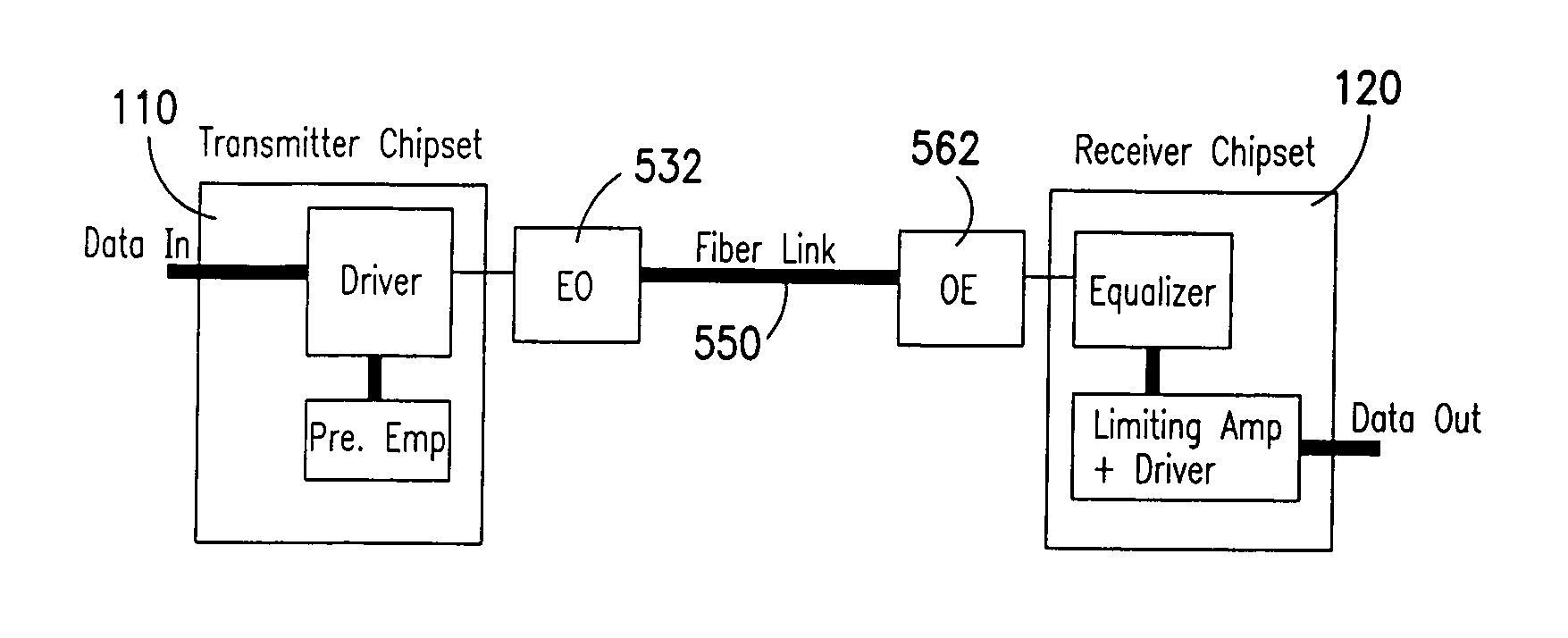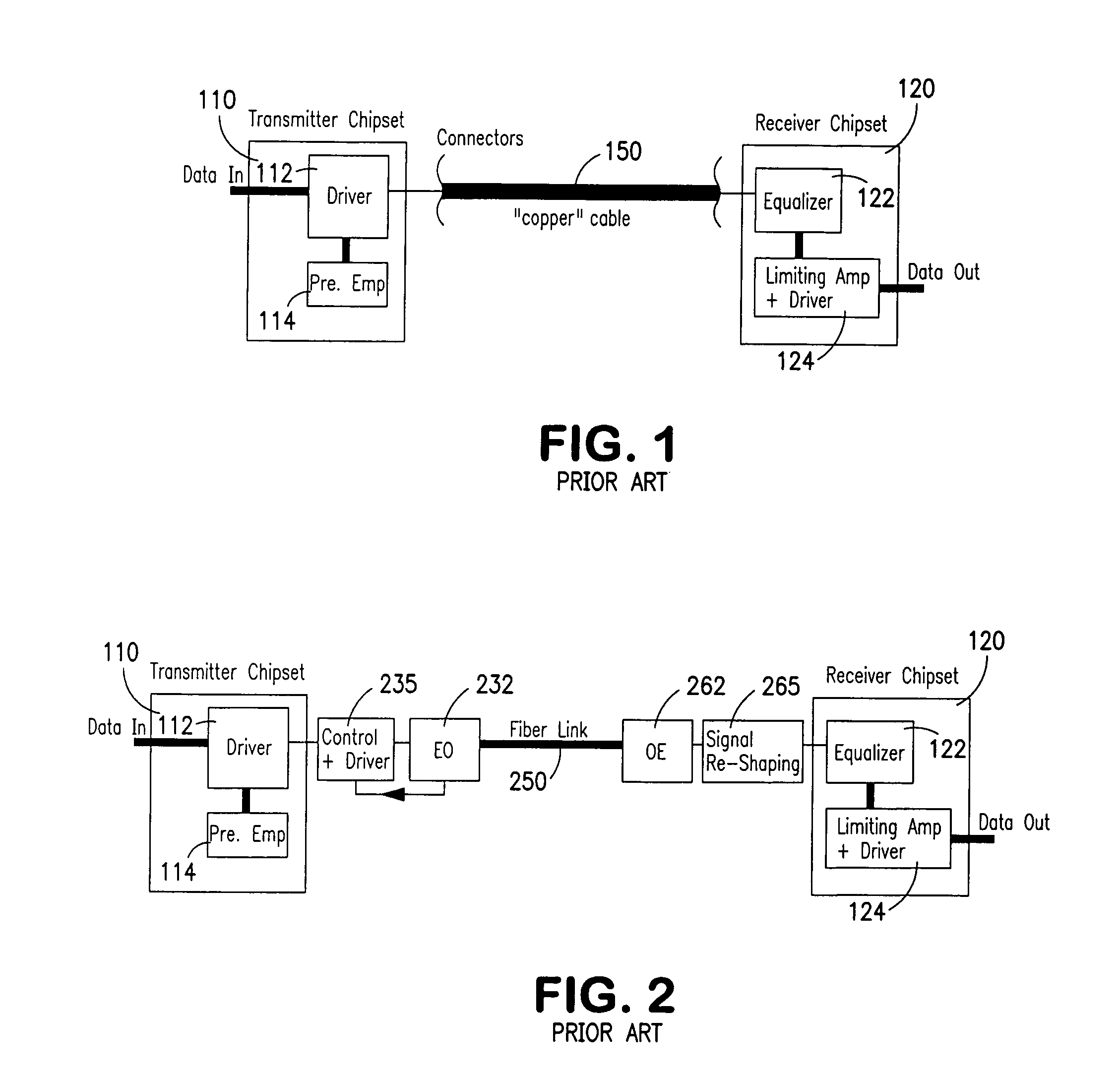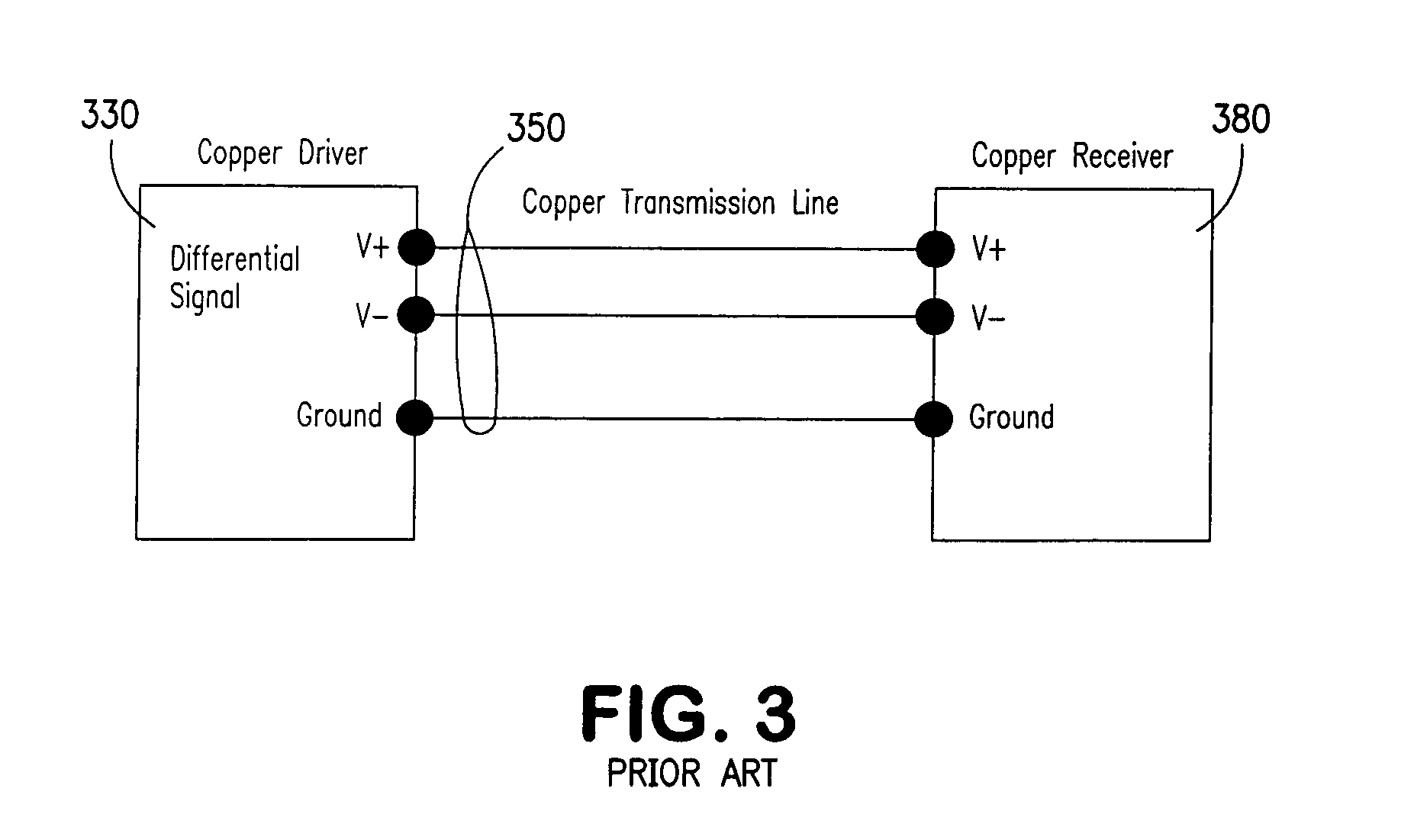High speed communication
a high-speed communication and data communication technology, applied in the field of data communication links, can solve the problems of increasing bulky copper cable wires, consuming relatively high power, and unattractive overall cable package, and achieve the effect of enhancing bandwidth
- Summary
- Abstract
- Description
- Claims
- Application Information
AI Technical Summary
Benefits of technology
Problems solved by technology
Method used
Image
Examples
Embodiment Construction
[0031]FIG. 5 is a diagram of an idealized fiber link for connection between a transmitter chipset 110 (as in FIG. 1) and a receiver chipset 120 (as also in FIG. 1) of the copper link illustrated in FIG. 1, but with the copper cable replaced by fiber link 550, an electrical-to-optical (EO) converter 532, and an optical-to-electrical (OE) converter 562. As described, for example, in conjunction with FIG. 2, however, substantial additional circuitry is presently required in conjunction with the conversion from a copper cable to a fiber link. A challenge hereof was to eliminate the need for some or all of the additional circuitry, and also to have the EO and OE converters powered by existing copper transmitter and copper receiver chipsets (and not externally powered) and be matched directly to existing built-in pre-emphasis and copper equalizers in the existing chipsets without the addition of the costly interface circuitry that is presently needed. Ideally, the EO-fiber cable-OE link s...
PUM
 Login to View More
Login to View More Abstract
Description
Claims
Application Information
 Login to View More
Login to View More - R&D
- Intellectual Property
- Life Sciences
- Materials
- Tech Scout
- Unparalleled Data Quality
- Higher Quality Content
- 60% Fewer Hallucinations
Browse by: Latest US Patents, China's latest patents, Technical Efficacy Thesaurus, Application Domain, Technology Topic, Popular Technical Reports.
© 2025 PatSnap. All rights reserved.Legal|Privacy policy|Modern Slavery Act Transparency Statement|Sitemap|About US| Contact US: help@patsnap.com



